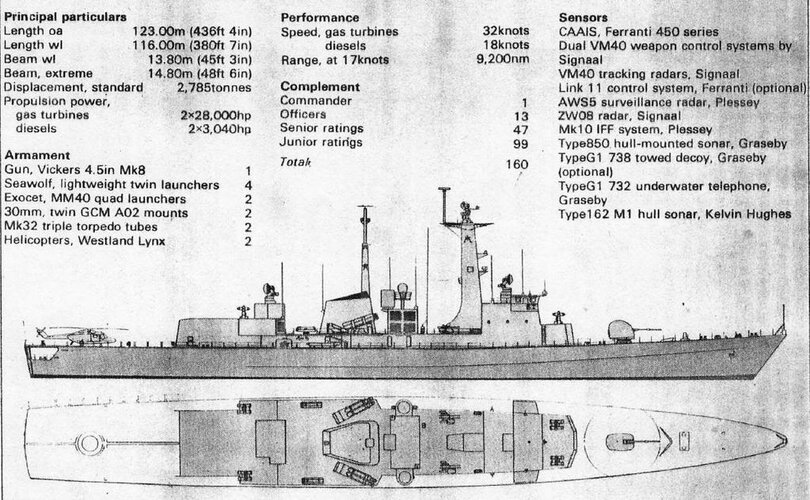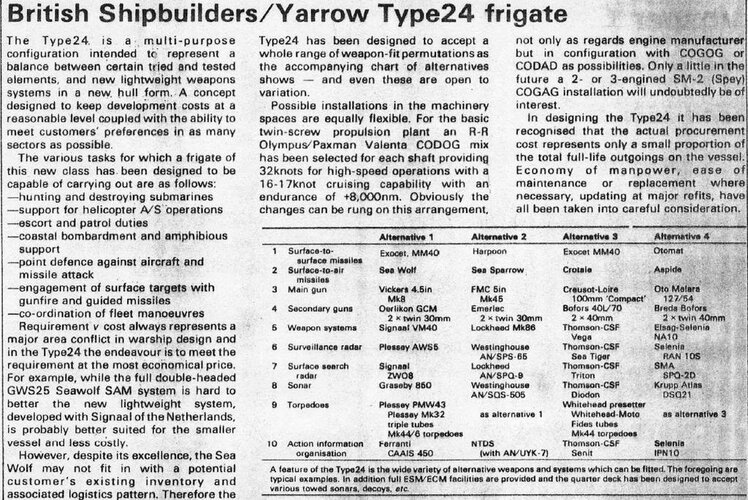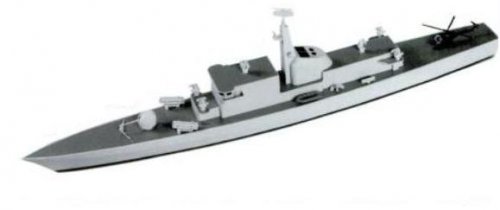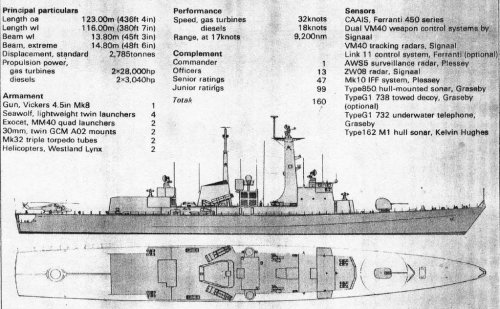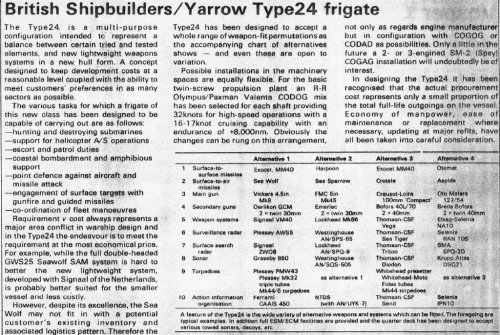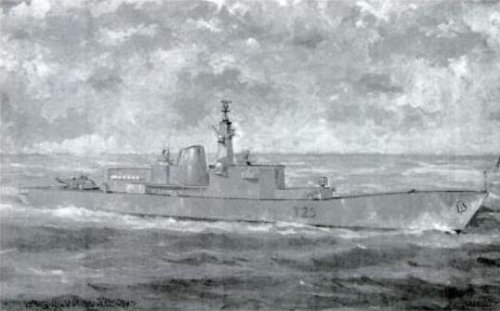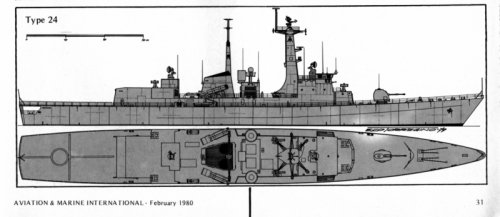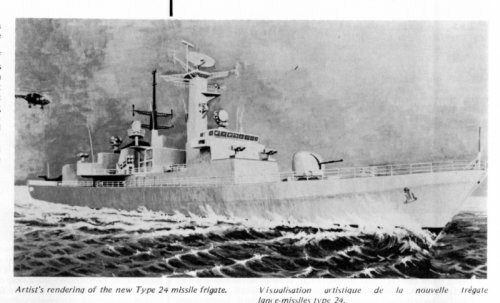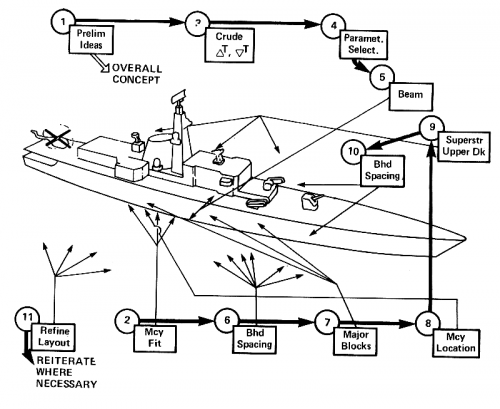Does anyone have any information on the British Type 24 and 25 frigate designs my interest was peaked by the Royal Navy type designation page in wikipedia
Type 24
I did a little reseach on this, but found confusing information. " A cheap ship, entended for export with a towed sonar array intended for ASW" according to wikipedia, sounds like the original mission for the Type 23. I did find a picture once that looked like a barely modified type 21, I think it was in a magazines online archive, but i've long since misplaced it.
Type 25
I found very little information regarding this design apparently a low cost type 22
Any designs, specs or opinions would be greatly appreciated
Thanks
Type 24
I did a little reseach on this, but found confusing information. " A cheap ship, entended for export with a towed sonar array intended for ASW" according to wikipedia, sounds like the original mission for the Type 23. I did find a picture once that looked like a barely modified type 21, I think it was in a magazines online archive, but i've long since misplaced it.
Type 25
I found very little information regarding this design apparently a low cost type 22
Any designs, specs or opinions would be greatly appreciated
Thanks

